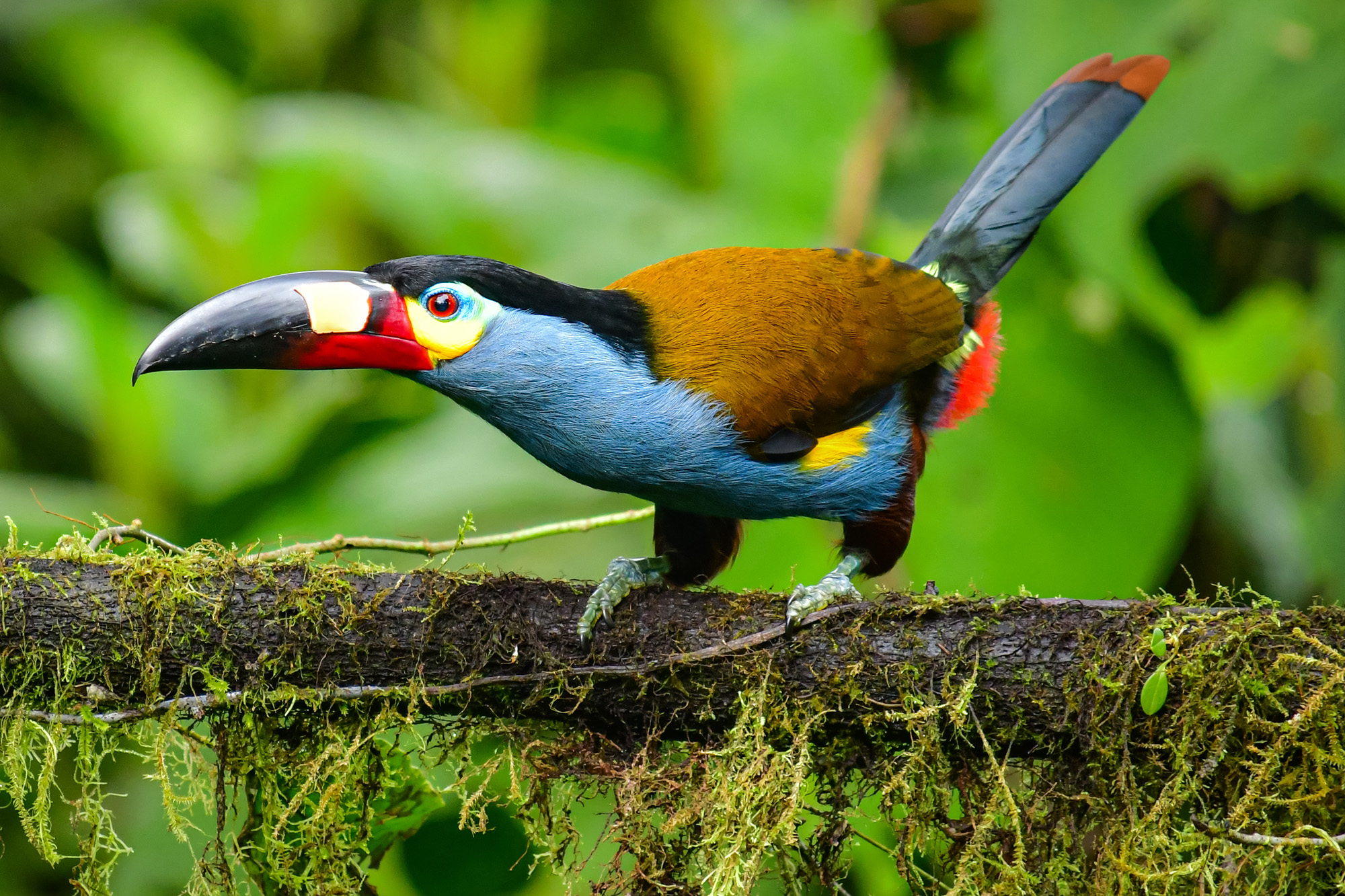The Plate-billed Mountain-Toucan, scientifically known as Andigena laminirostris, is a spectacular bird species that graces the mountainous regions of Ecuador. In this article, we will explore the enchanting world of the Plate-billed Mountain-Toucan, delving into its unique characteristics, habitat, conservation status, and the efforts being made to protect this vibrant avian wonder in Ecuador.

Appearance and Behavior: The Plate-billed Mountain-Toucan is a true visual delight, with its striking colors and distinctive features. This species showcases a combination of black plumage, a bright yellow chest, and a large, vivid red bill. Its behavior is equally captivating, with agile flight patterns and acrobatic movements while foraging for fruits, insects, and small reptiles. The Plate-billed Mountain-Toucan’s unmistakable appearance and lively antics make it a popular subject for birdwatchers and photographers.
Endemic Habitat: This magnificent bird is endemic to the cloud forests and montane forests of Ecuador, where it thrives in the higher elevations of the Andes mountain range. Its preferred habitat includes mossy and humid forests with dense vegetation and a rich abundance of fruit-bearing trees. These high-altitude forests provide a perfect haven for the Plate-billed Mountain-Toucan to fulfill its ecological niche.

Conservation Status: The Plate-billed Mountain-Toucan faces several conservation challenges that have led to its vulnerable status. Habitat loss due to deforestation, agricultural expansion, and logging poses a significant threat to its survival. Climate change and human disturbance further exacerbate the challenges faced by this species. The International Union for Conservation of Nature (IUCN) has listed the Plate-billed Mountain-Toucan as “Near Threatened,” highlighting the urgent need for conservation actions.
Conservation Efforts: To protect the Plate-billed Mountain-Toucan and its habitat in Ecuador, various conservation initiatives have been implemented, including:

a) Protected Areas: The establishment and management of protected areas, such as national parks and reserves, play a vital role in preserving the bird’s habitat and promoting its conservation.
b) Research and Monitoring: Ongoing research projects monitor the population dynamics, behavior, and ecological requirements of the Plate-billed Mountain-Toucan. These efforts provide valuable data for conservation planning and decision-making.
c) Reforestation and Habitat Restoration: Efforts are underway to restore degraded areas within the bird’s range by planting native tree species and rehabilitating critical habitat.
d) Community Engagement and Education: Engaging local communities in conservation efforts through education programs, workshops, and awareness campaigns fosters a sense of stewardship and promotes sustainable practices.
e) Responsible Tourism: Promoting responsible birdwatching and ecotourism practices ensures that visitors have minimal impact on the bird’s habitat while providing economic incentives for conservation efforts.
Conclusion: The Plate-billed Mountain-Toucan, with its vibrant plumage and unique ecological role, is an emblematic species of the cloud forests in Ecuador. Conservation efforts aimed at protecting its habitat, raising awareness, and engaging local communities are essential to ensure its survival and the preservation of Ecuador’s biodiversity. By supporting initiatives that promote sustainable practices and habitat restoration, we can safeguard the Plate-billed Mountain-Toucan and the fragile ecosystems it inhabits. Let us unite in protecting this colorful avian wonder, celebrating its presence in the captivating landscapes of Ecuador.
